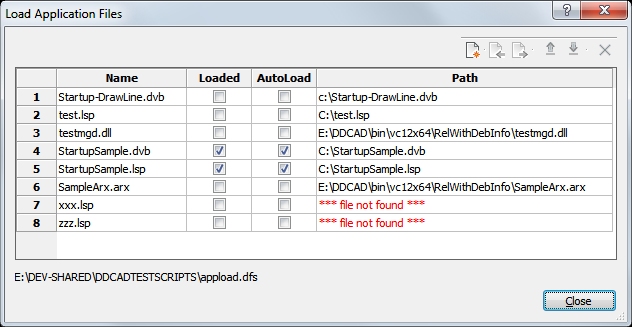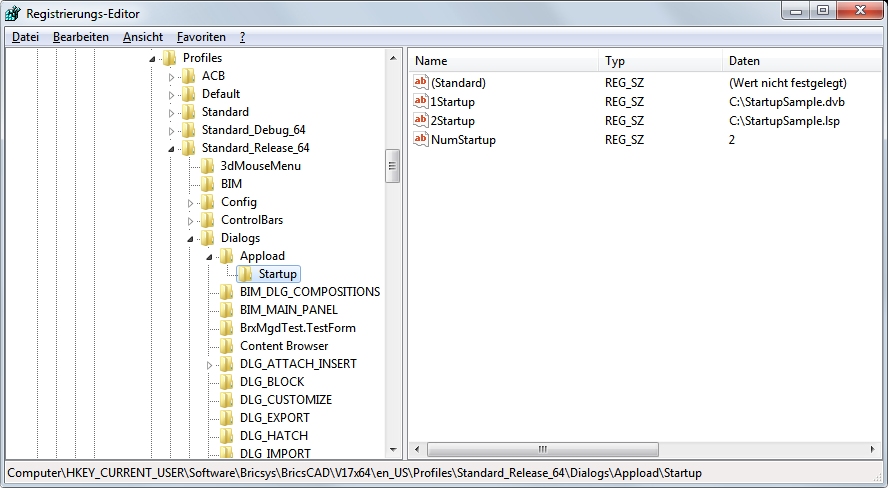Appload Dialog : using "AutoLoad" feature
|
|
|
|
|
|
Appload Dialog
has been redesigned to provide more
functionality - application files can easily be added, loaded &
unloaded (except for Lisp files), and their actual loading status
is reported. |
|
appload.dfs
text file defines the application files (Lisp,
BRX, .NET, VBA) to be listed in Appload Dialog; "appload.dfs" is
searches along SupportPathes list like other support files - the
first "appload.dfs" file found will be used.
Application files can be specified without path, with relative path, or with
absolute pathes; if no path (or a relative path) is specified, then
the file is searched for using the SupportPaths list, as
usually.
Missing files (usually indicating incomplete
SupportPaths setting) are maintained as well, and shown as missing
files in the dialog (also to assist with
troubleshooting).
Comment lines can
be added defined by a ";" semicolon in first column, to temporarily
disable / hide some file(s); Appload Dialog maintains such comment
lines.
Sequence of files :
As the sequence of loading application files
sometimes matters, the Appload Dialog also supports this - the
Up/Down arrows allow to move the selected file to desired
position.
Note : Lisp files
are always loaded (in their defined sequence) after loading BRX,
.NET, VBA files, as those usually define some interface functions
for Lisp, and because they are loaded "globally", while Lisp
application files are loaded "per drawing".
Storage :
appload.dfs file is stored on on disk - if not
present on first dialog invocation, it will be created in user's
support folder (and the actually used appload.dfs filename is shown
on the dialog as well).
"AutoLoad" :
The AutoLoad status for a given file is stored
in Registry, under the current profile, using the key :
HKEY_CURRENT_USER\Software\Bricsys\BricsCAD\<VersionKey>\<LanguageKey>\Profiles\<CurrentProfile>\Dialogs\Appload\Startup
Keys : "NumStartup" (string) declares
the number of "AutoLoad" entries; keys of format
"nStartup" (string) define the application file(s) to be
AutoLoaded
|
|
|
|
Important Note 1 :
Appload Dialog (and the mechanisms behind)
always combines (merges) the informations from Registry with
informations from appload.dfs file - when Appload Dialog is closed,
those synchronised / merged informations are stored back to both
appload.dfs file and Registry again
(though Registry *only* keeps those AutoLoad
declared files).
Application developers can also use these
per-profile Registry definitions to install their applications :
adding appropriate entries from application installer allows to
integrate into BricsCAD - at next startup, BricsCAD will
automatically load the application files.
Important Note 2 :
File names can be specified without path, with
relative path, or with absolute path - if no path, or a relative
path, is specified for an application file, then it is searched
using SupportPaths setting, which can be depending on the
particular profile.

